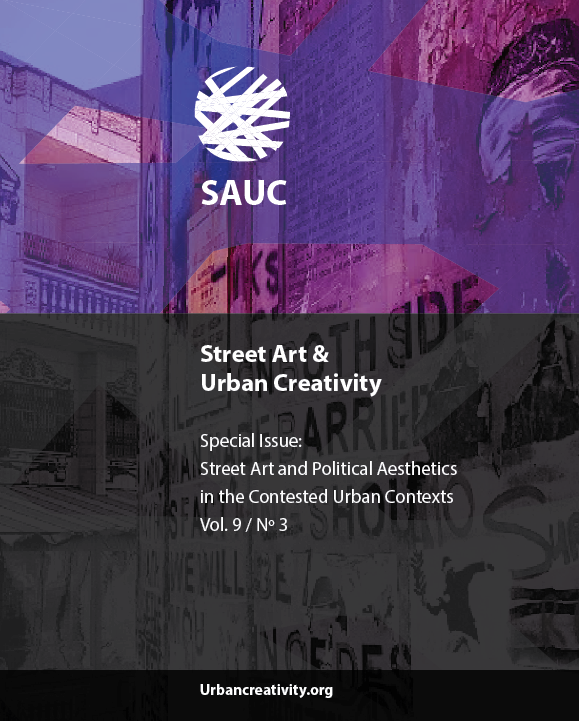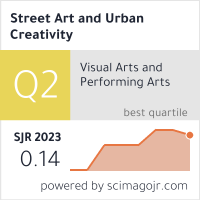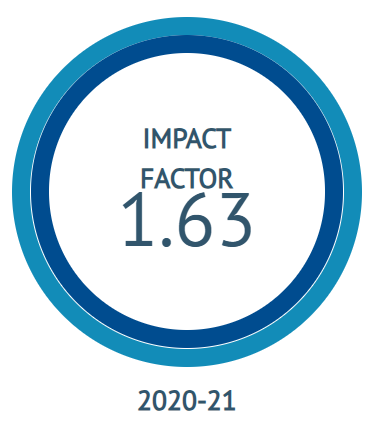Aesthetic Activism and the Carnivalesque in the Urban Social Movements
DOI:
https://doi.org/10.25765/sauc.v9i3.802Palabras clave:
Aesthetics, art, activism, carnivalesque, social movements, urban space, tactical frivolityResumen
This paper considers the ways in which changes and experimentations in the realm of aesthetics ,as well as in the new forms of political participation and representation in an era of global revolt, have resulted in a deep connection between the aesthetics and politics of civil disobedience, political activism and artistic representation. Specifically, the discussion is based on a comparative analysis of the urban activism of the Carnival Against Capital protests in London and Seattle, the Occupy Movement in New York, and the Gezi Park Movement in Turkey where the aesthetics of active participation represents a new kind of politicization—collective memory and language, sensual festivity and the forming of communitas—that goes beyond the conventional understanding of the convergence of politics and art.
The author focuses on the notable carnivalesque character in those protests—the costumes, the masks, the performances, the interventional tactics and the aesthetics of community building. Based on the theories of aesthetics and rebellion the paper proposes the concept of carnival aesthetics as the study of the sensuous and subversive experience of the multitude when marching, throwing slogans, battling with police forces behind the barricades, performing and dancing together on the streets. Here carnivalesque aesthetics are employed as a means to create diversity, creativity, decentralization, horizontality, egalitarianism and direct action—the political principles that are at the heart of the recent protests. The discussion demonstrates that while thriving authoritarianism depends on disciplined individuals and the crisis in democracy, carnival aesthetics during protests present radicalized social relations that are increasingly becoming the core of the current social, cultural and environmental struggles around the world.
Descargas
Estadísticas globales ℹ️
|
508
Visualizaciones
|
343
Descargas
|
|
851
Total
|
|
Descargas
Publicado
Cómo citar
Número
Sección
Licencia
Los autores/as que publiquen en esta revista aceptan las siguientes condiciones:
- Los autores/as conservan los derechos de autor.
- Los autores/as ceden a la revista el derecho de la primera publicación. La revista también posee los derechos de edición.
- Todos los contenidos publicados se regulan mediante una Licencia Atribución/Reconocimiento-SinDerivados 4.0 Internacional. Acceda a la versión informativa y texto legal de la licencia. En virtud de ello, se permite a terceros utilizar lo publicado siempre que mencionen la autoría del trabajo y a la primera publicación en esta revista. Si transforma el material, no podrá distribuir el trabajo modificado.
- Los autores/as pueden realizar otros acuerdos contractuales independientes y adicionales para la distribución no exclusiva de la versión del artículo publicado en esta revista (p. ej., incluirlo en un repositorio institucional o publicarlo en un libro) siempre que indiquen claramente que el trabajo se publicó por primera vez en esta revista.
- Se permite y recomienda a los autores/as a publicar su trabajo en Internet (por ejemplo en páginas institucionales o personales), una vez publicado en la revista y citando a la misma ya que puede conducir a intercambios productivos y a una mayor y más rápida difusión del trabajo publicado (vea The Effect of Open Access).













